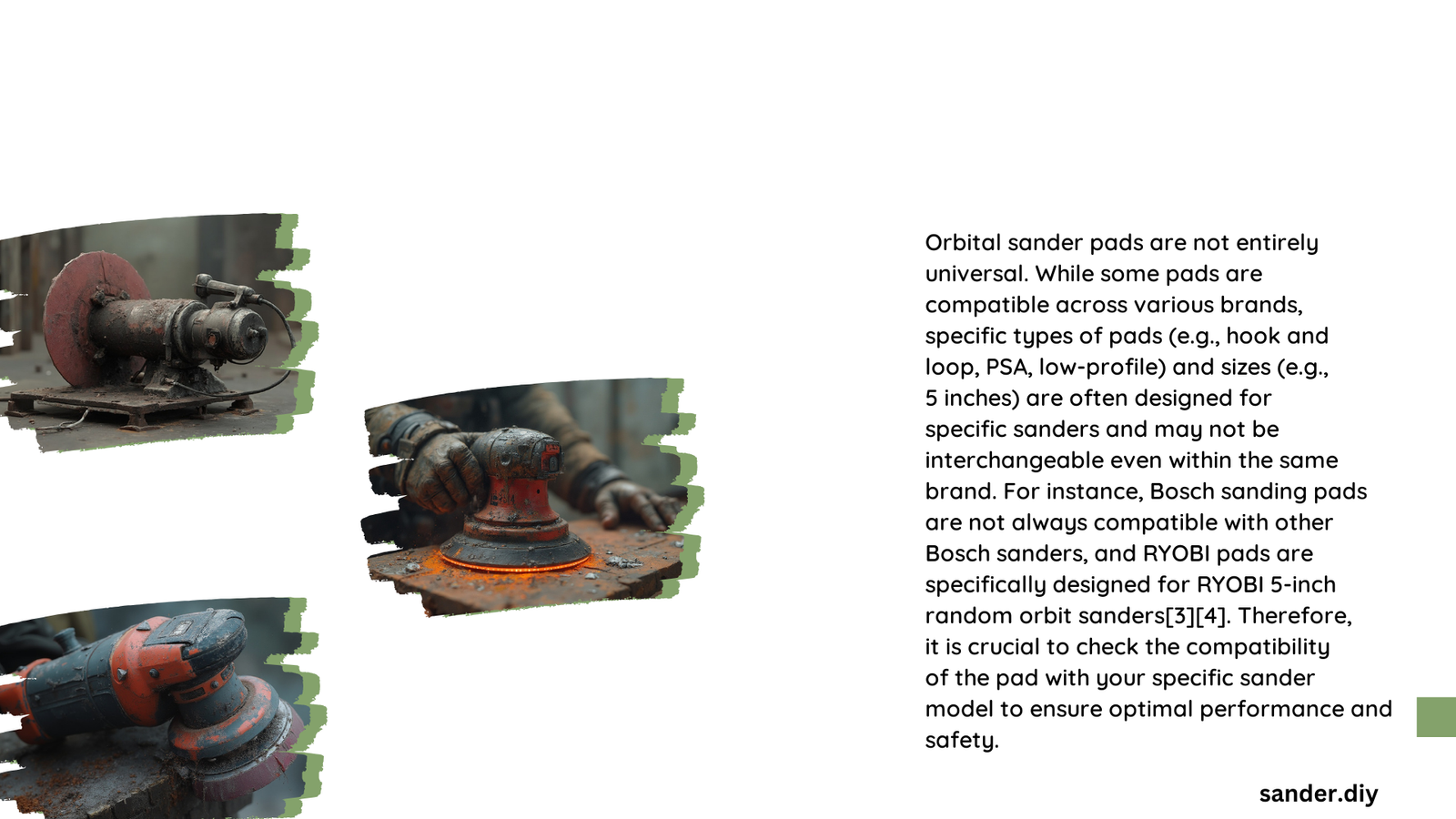Orbital sander pads are not entirely universal, but many manufacturers design their pads with standardized features that enable cross-brand compatibility. Most orbital sander pads use a 5/16\”-24 male thread attachment and come in standard diameters like 3\”, 5\”, and 6\”, which allows for broader interchangeability across different brands and models of random orbital sanders.
What Makes Orbital Sander Pads Compatible?
Are Standard Attachment Threads Important?
The most critical factor in orbital sander pad universality is the attachment thread. Most random orbital sanders use a 5/16\”-24 male thread, which creates a near-universal standard. This means that pads from different manufacturers can often be used interchangeably.
| Thread Type | Compatibility | Common Brands |
|---|---|---|
| 5/16\”-24 | High | Dynabrade, RYOBI, DeWalt |
| Proprietary | Low | Some specialized models |
How Do Pad Sizes Impact Universality?
Orbital sander pad sizes play a significant role in compatibility. The most common diameters include:
- 3-inch pads
- 3.5-inch pads
- 5-inch pads
- 6-inch pads
- 8-inch pads
These standard sizes increase the likelihood of cross-brand compatibility, though exact specifications can vary.
Factors Affecting Orbital Sander Pad Interchangeability

What Determines Pad Attachment Mechanism?
Two primary attachment mechanisms influence universality:
- Hook-and-Loop Systems
- Most common attachment method
- Allows quick disc changes
-
Generally more universal across brands
-
Pressure-Sensitive Adhesive (PSA) Pads
- Less flexible
- Limited cross-brand compatibility
- Typically brand-specific
Can Different Materials Impact Compatibility?
Pad materials can affect universal usage:
- Urethane Pads
- High durability
- Better heat resistance
-
More likely to be cross-compatible
-
Rubber Pads
- Medium density
- General-purpose sanding
- Moderate compatibility
Best Practices for Ensuring Pad Compatibility
How to Choose the Right Orbital Sander Pad?
- Check your sander’s thread size
- Measure existing pad diameter
- Verify attachment mechanism
- Consider intended usage
- Review manufacturer recommendations
What Should You Avoid?
- Forcing incompatible pads
- Using damaged or worn pads
- Ignoring manufacturer specifications
- Overlooking thread and diameter requirements
Practical Recommendations
While orbital sander pads are not 100% universal, many are designed with broad compatibility in mind. Always:
- Verify thread size
- Check pad diameter
- Consider your specific sanding requirements
- Consult manufacturer guidelines
Expert Tips
- Invest in adapters for minor compatibility issues
- Purchase pads from reputable manufacturers
- Keep original packaging for reference
- Inspect pad condition before use
Conclusion
Orbital sander pads offer significant cross-brand compatibility, but universal usage depends on specific thread sizes, pad diameters, and attachment mechanisms. Careful selection and verification can help ensure optimal performance.
